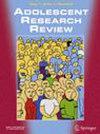Body Image Problems in Individuals with Type 1 Diabetes: A Review of the Literature
Abstract
Despite type 1 diabetes' (T1D) potential influence on adolescents' physical development, the occurrence of body image problems of adolescents with diabetes remains unclear. No research synthesis has yet addressed this issue. This study aims to systematically evaluate the empirical evidence concerning body image in individuals with T1D in order to provide an overview of the existing literature. Using PRISMA methodology, 51 relevant studies that fulfilled the eligibility criteria were found, the majority of them (N = 48) involving youth. The findings varied across studies: 17 studies indicated that in youth with T1D, body dissatisfaction was common and that body concerns were generally greater in youth with T1D than in controls; nine studies did not find any differences in body image problems between participants with and without T1D; three studies described higher body satisfaction in youth with diabetes than in controls; and three studies reported mixed results. Body concerns in individuals with T1D were often found to be associated with negative medical and psychological functioning. The variability and limits in assessment tools across studies, the overrepresentation of female subjects, and the fact that most research in this field is based on cross-sectional data are stressed in the interpretation of these mixed findings. Future research directions that could improve the understanding of body image concerns and clinical implications are discussed.

 求助内容:
求助内容: 应助结果提醒方式:
应助结果提醒方式:


